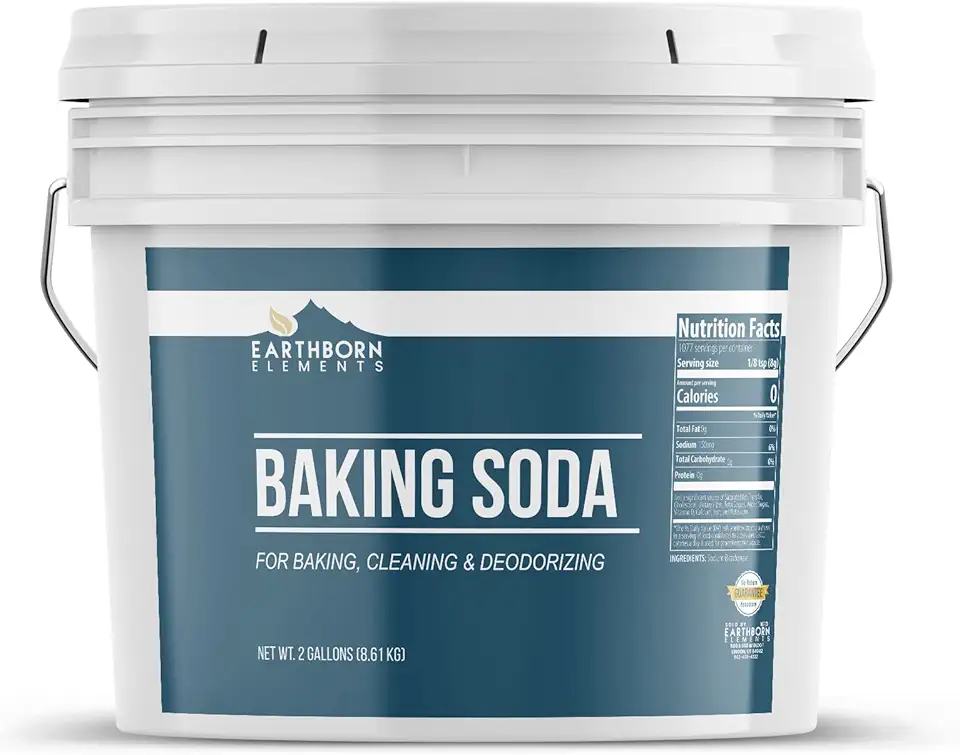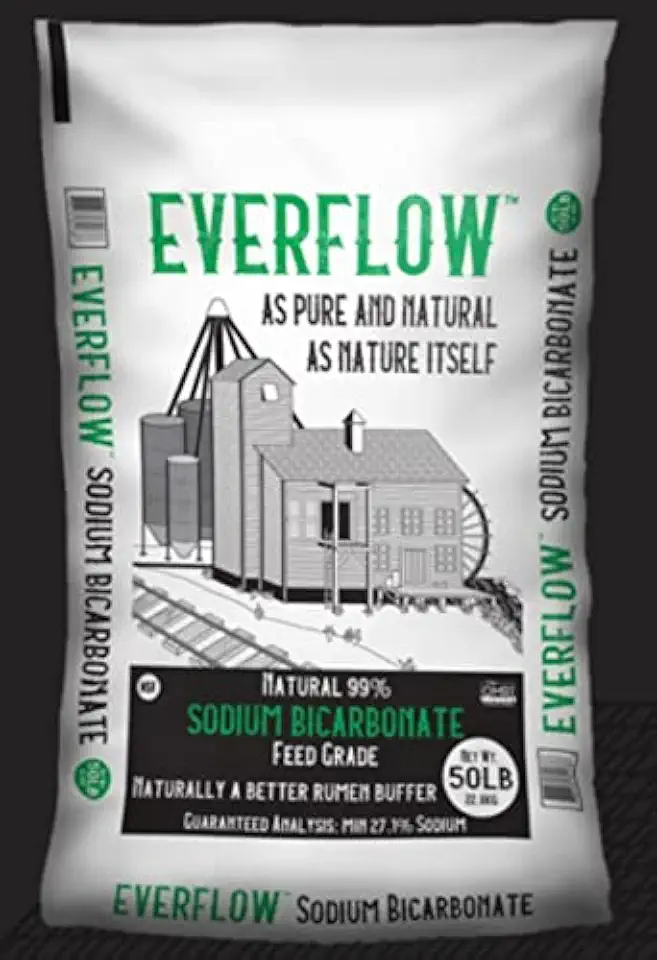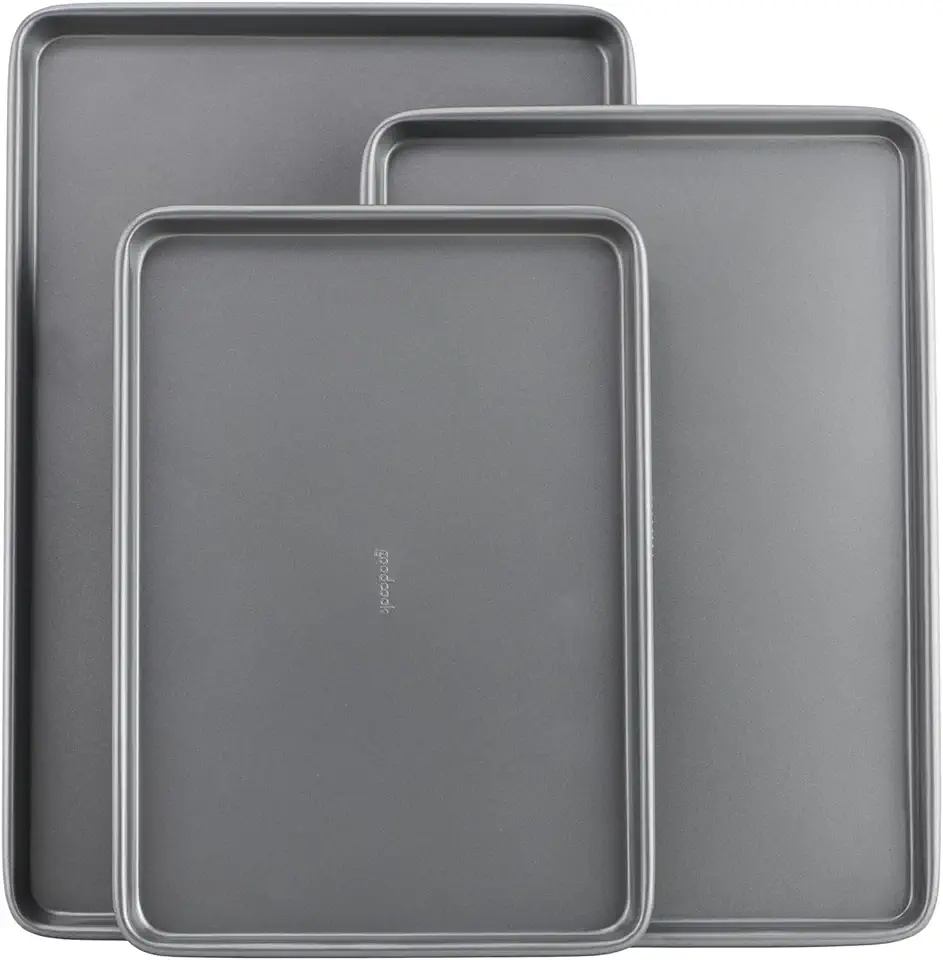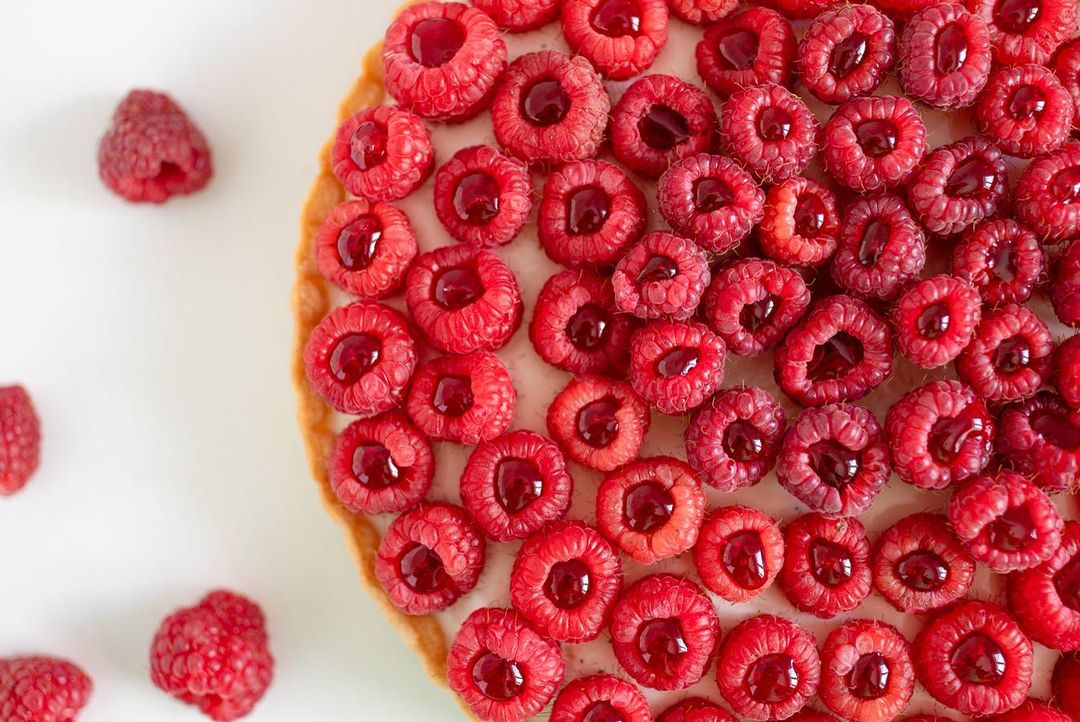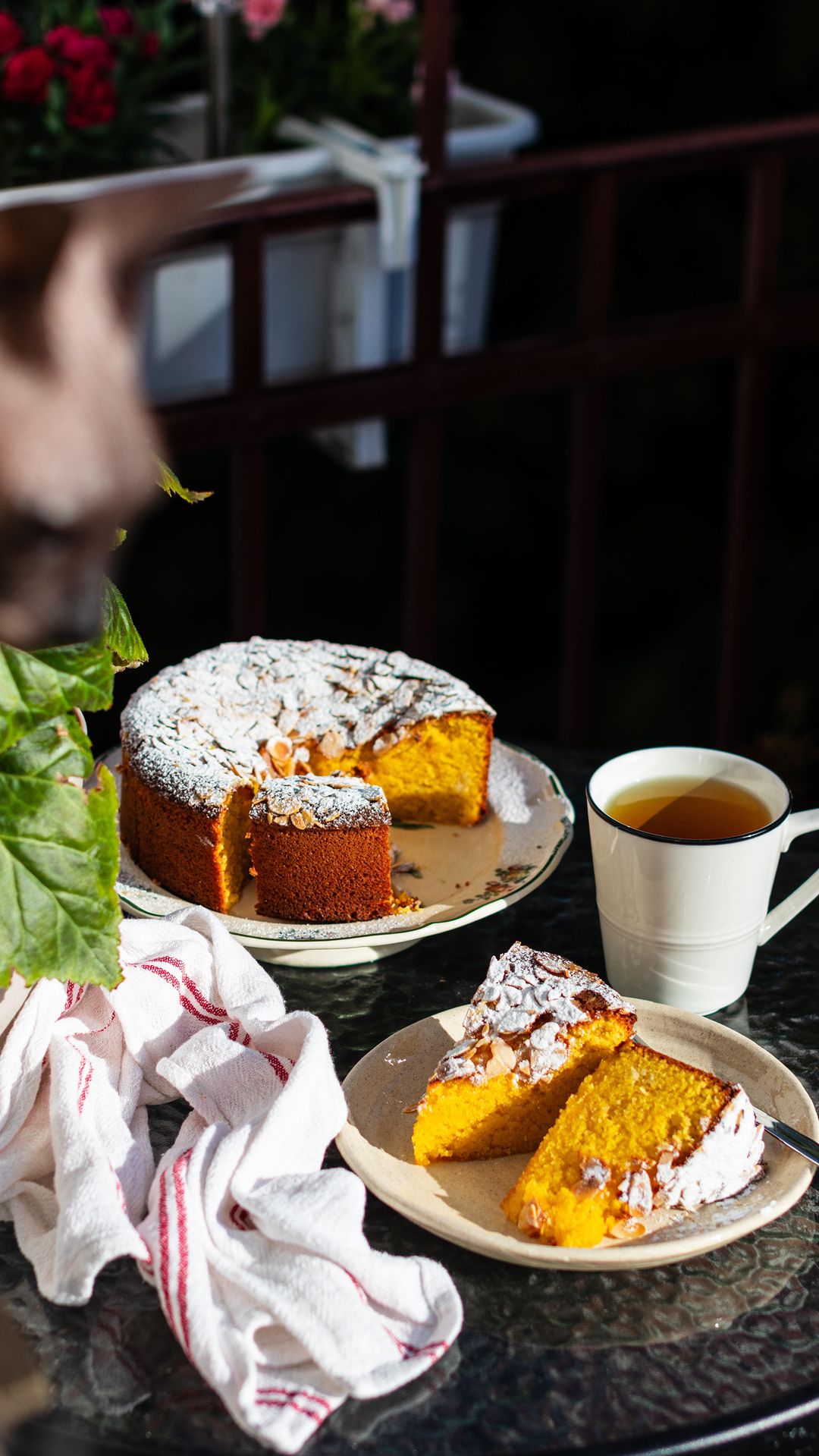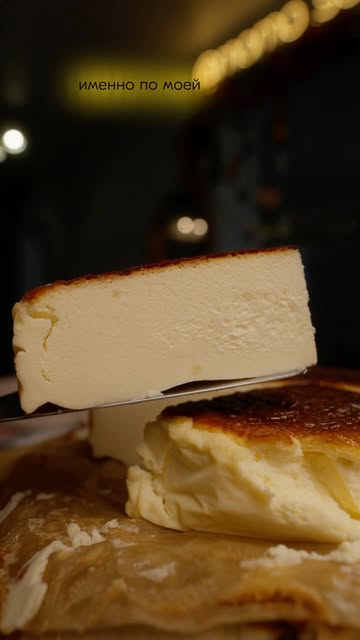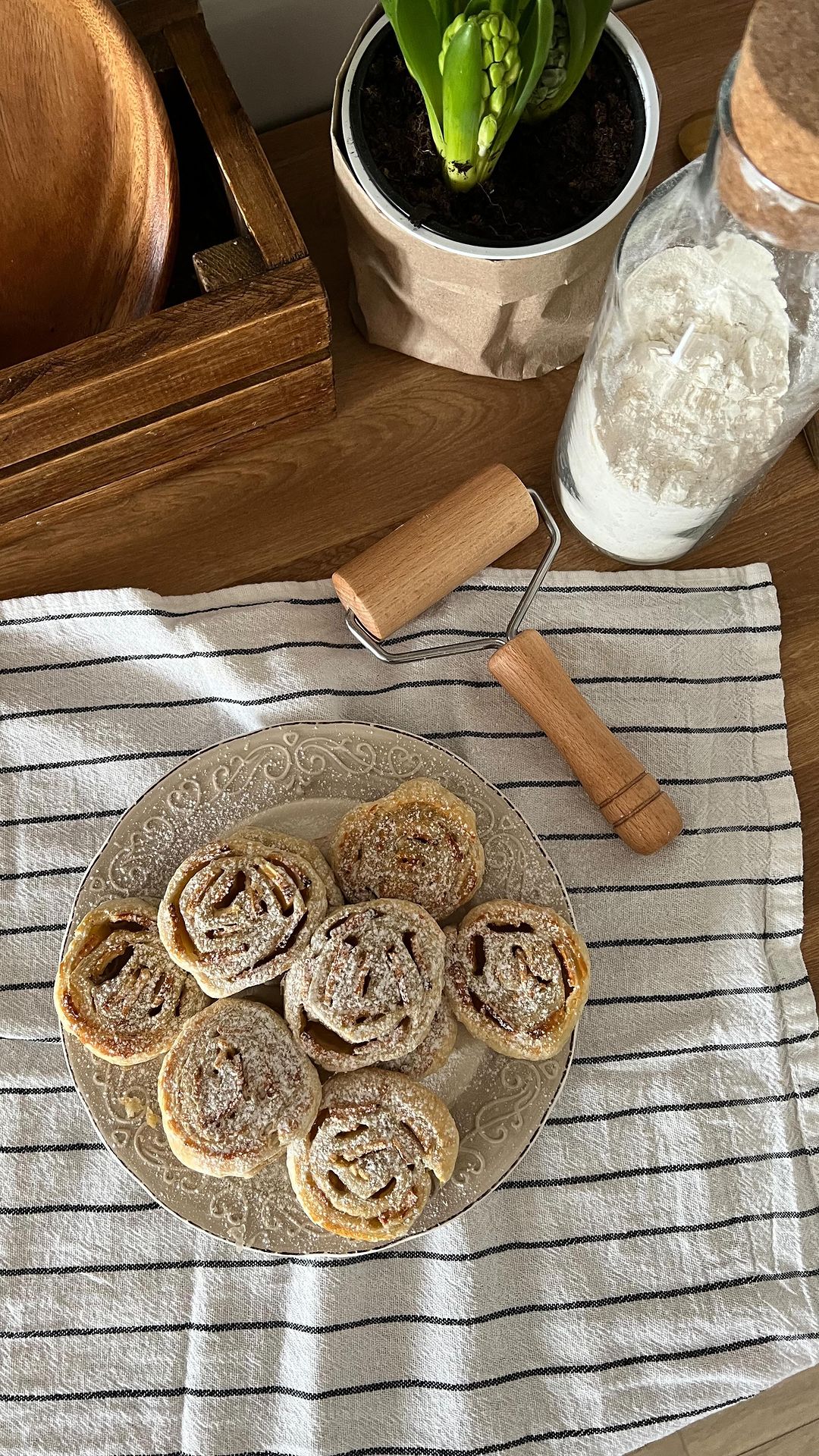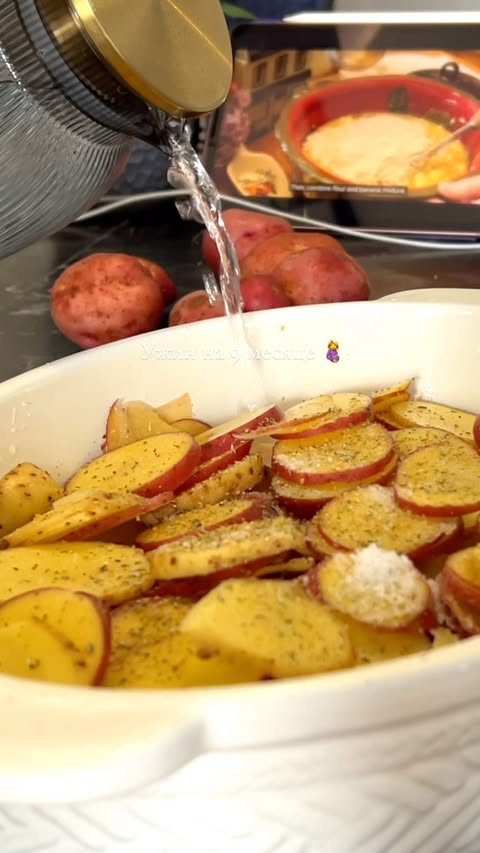Ingredients
Main Ingredients
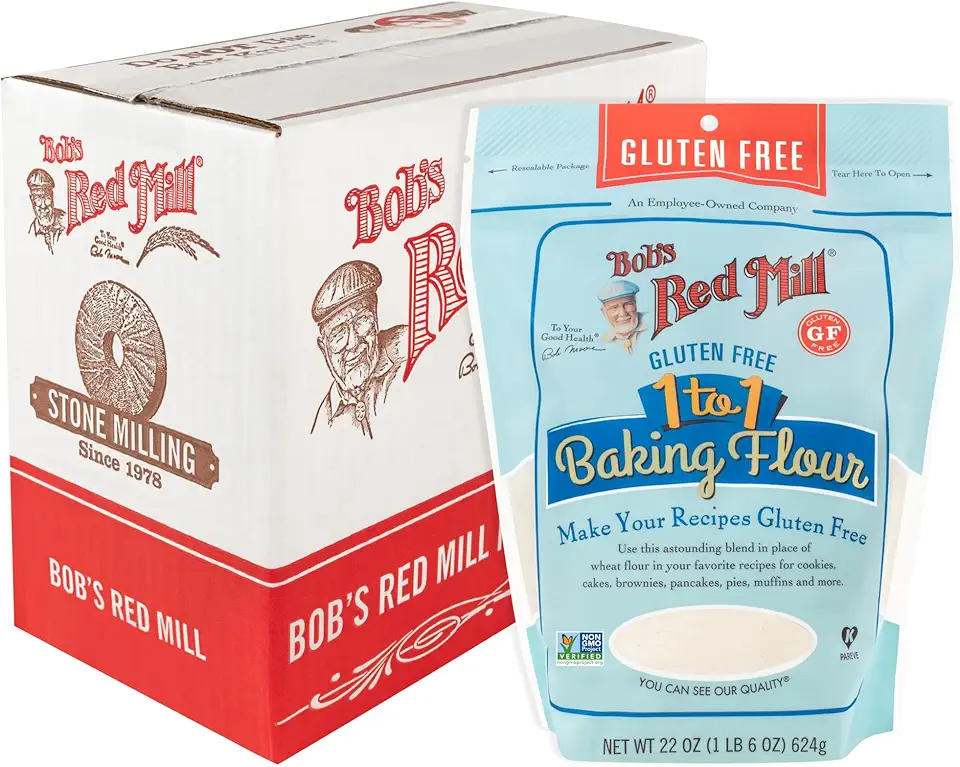 Bob's Red Mill Gluten Free 1-to-1 Baking Flour, 22 Ounce (Pack of 4)
$23.96
View details
Prime
Bob's Red Mill Gluten Free 1-to-1 Baking Flour, 22 Ounce (Pack of 4)
$23.96
View details
Prime
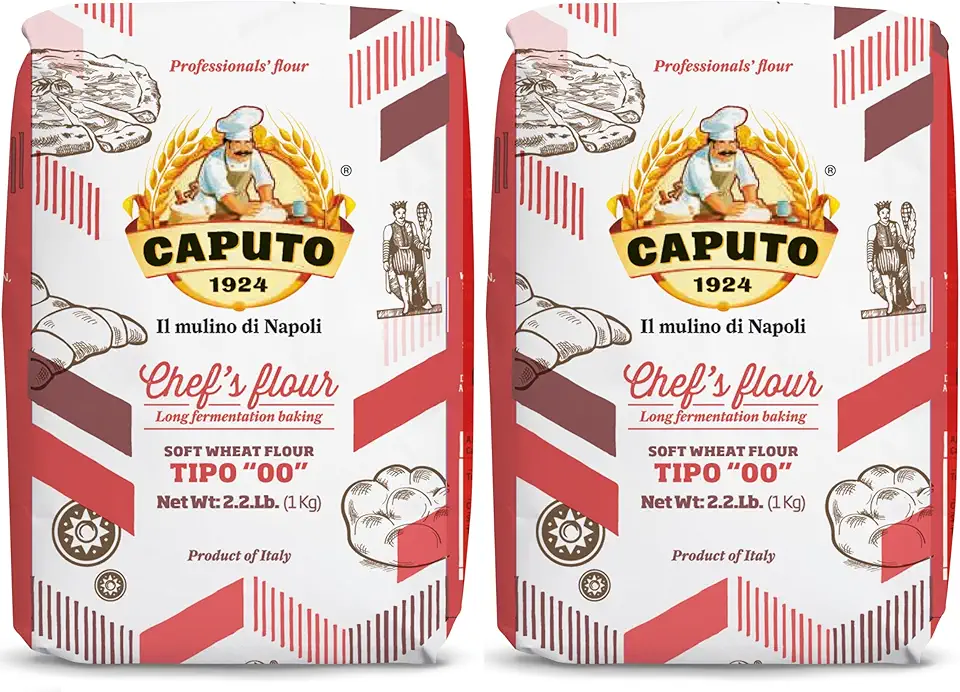 Antimo Caputo Chefs Flour - Italian Double Zero 00 - Soft Wheat for Pizza Dough, Bread, & Pasta, 2.2 Lb (Pack of 2)
$16.99
View details
Prime
best seller
Antimo Caputo Chefs Flour - Italian Double Zero 00 - Soft Wheat for Pizza Dough, Bread, & Pasta, 2.2 Lb (Pack of 2)
$16.99
View details
Prime
best seller
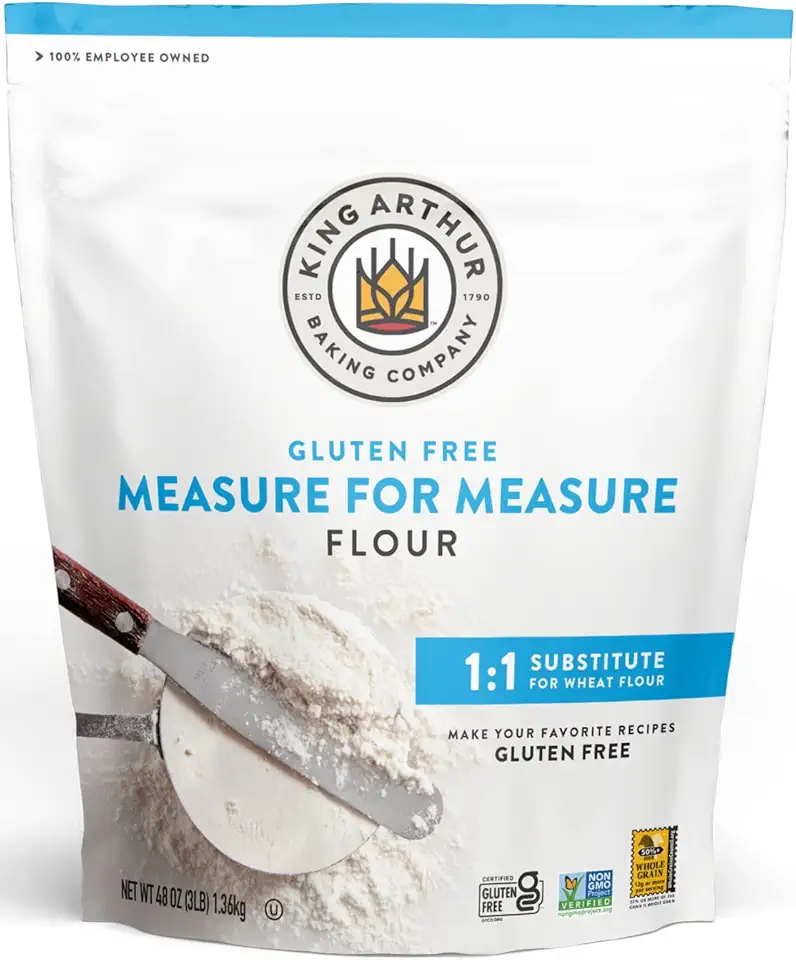 King Arthur, Measure for Measure Flour, Certified Gluten-Free, Non-GMO Project Verified, Certified Kosher, 3 Pounds, Packaging May Vary
$8.62
View details
King Arthur, Measure for Measure Flour, Certified Gluten-Free, Non-GMO Project Verified, Certified Kosher, 3 Pounds, Packaging May Vary
$8.62
View details
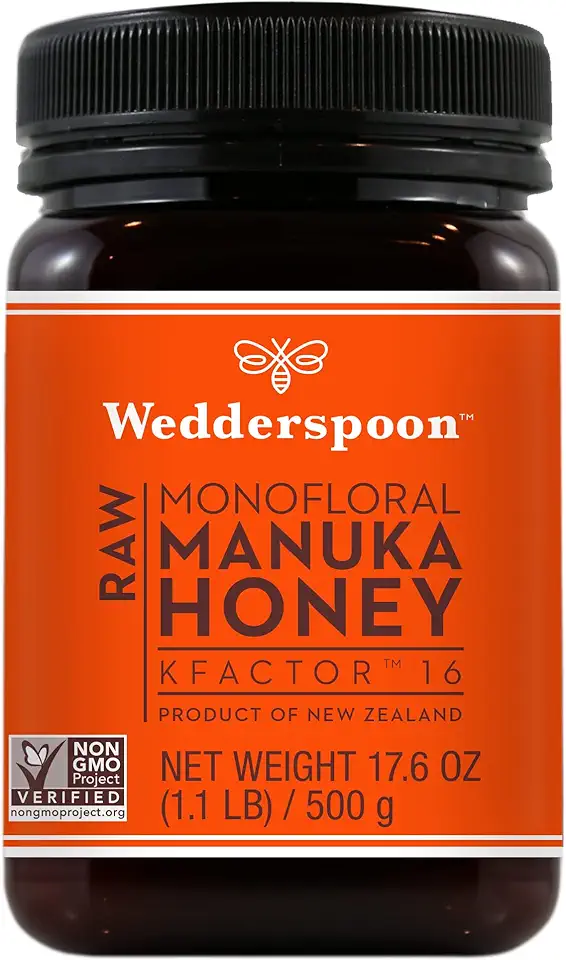 Wedderspoon Raw Premium Manuka Honey, KFactor 16, 17.6 Oz, Unpasteurized, Genuine New Zealand Honey, Traceable from Our Hives to Your Home
$34.36
$37.00
View details
Prime
Wedderspoon Raw Premium Manuka Honey, KFactor 16, 17.6 Oz, Unpasteurized, Genuine New Zealand Honey, Traceable from Our Hives to Your Home
$34.36
$37.00
View details
Prime
 Nate's Organic 100% Pure, Raw & Unfiltered Honey - USDA Certified Organic - 32oz. Squeeze Bottle
$16.97
View details
Prime
Nate's Organic 100% Pure, Raw & Unfiltered Honey - USDA Certified Organic - 32oz. Squeeze Bottle
$16.97
View details
Prime
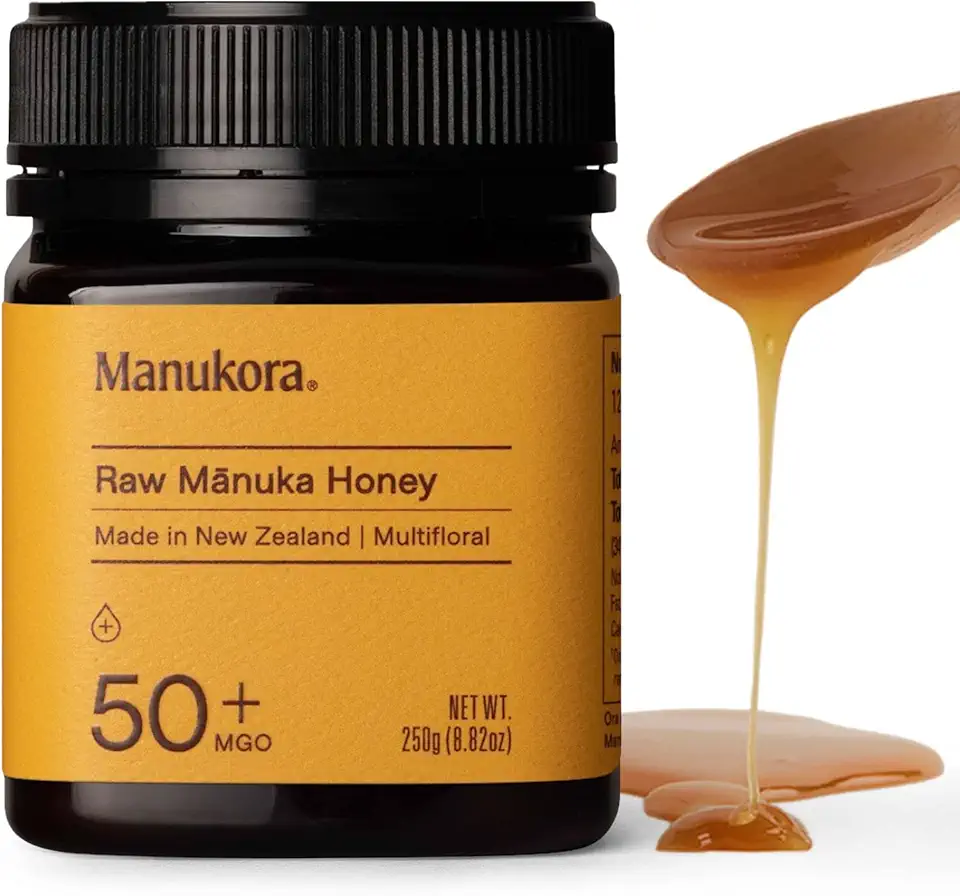 Manukora Raw Manuka Honey, MGO 50+, New Zealand Honey, Non-GMO, Traceable from Hive to Hand, Daily Wellness Support - 250g (8.82 Oz)
$13.24
View details
Manukora Raw Manuka Honey, MGO 50+, New Zealand Honey, Non-GMO, Traceable from Hive to Hand, Daily Wellness Support - 250g (8.82 Oz)
$13.24
View details
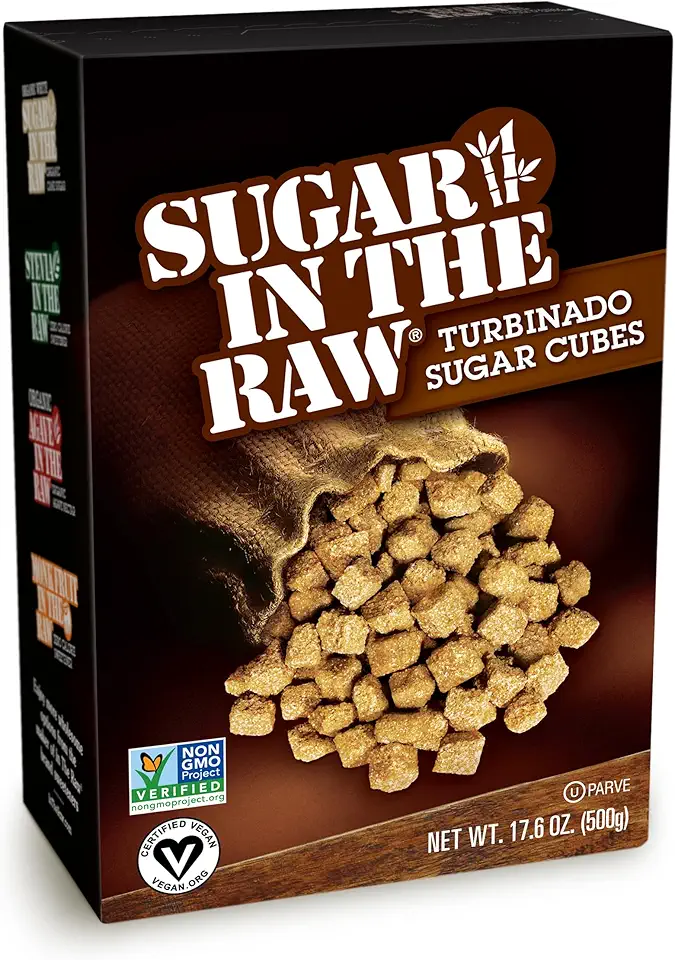 Sugar In The Raw Granulated Turbinado Cane Sugar Cubes, No Added Flavors or erythritol, Pure Natural Sweetener, Hot & Cold Drinks, Coffee, Vegan, Gluten-Free, Non-GMO,Pack of 1
$5.27
View details
Prime
Sugar In The Raw Granulated Turbinado Cane Sugar Cubes, No Added Flavors or erythritol, Pure Natural Sweetener, Hot & Cold Drinks, Coffee, Vegan, Gluten-Free, Non-GMO,Pack of 1
$5.27
View details
Prime
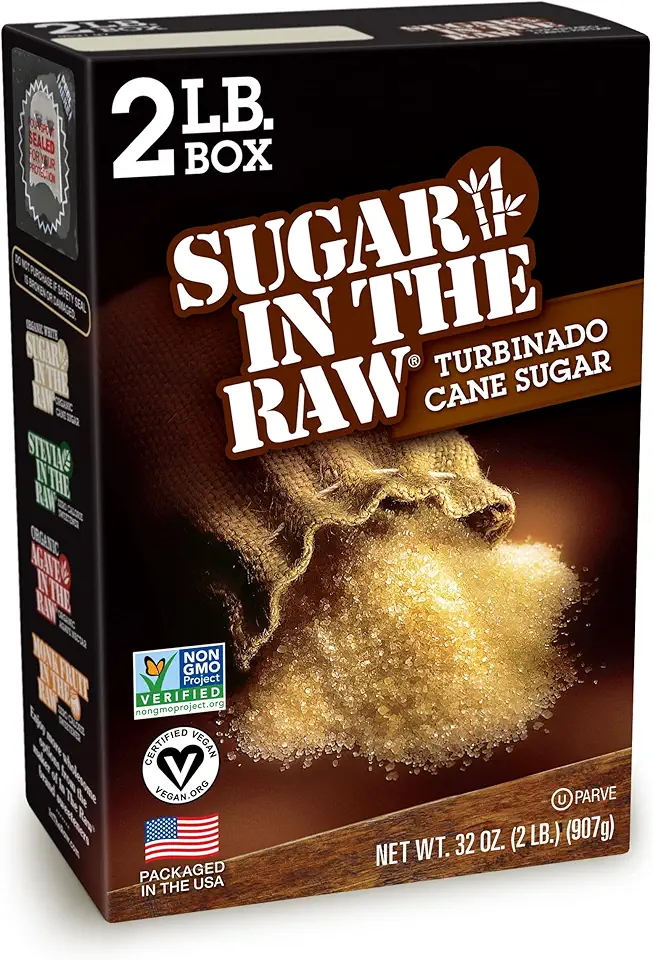 Sugar In The Raw Granulated Turbinado Cane Sugar, No Added Flavors or erythritol, Pure Natural Sweetener, Hot & Cold Drinks, Coffee, Baking, Vegan, Gluten-Free, Non-GMO, Bulk Sugar, 2lb Bag (1-Pack)
$3.74
$4.14
View details
Prime
Sugar In The Raw Granulated Turbinado Cane Sugar, No Added Flavors or erythritol, Pure Natural Sweetener, Hot & Cold Drinks, Coffee, Baking, Vegan, Gluten-Free, Non-GMO, Bulk Sugar, 2lb Bag (1-Pack)
$3.74
$4.14
View details
Prime
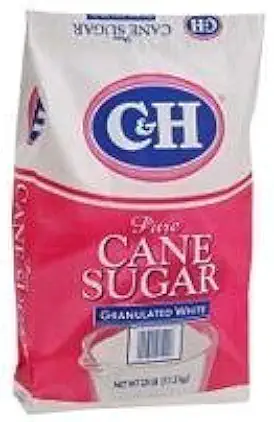 C&H Pure Cane Granulated White Sugar, 25-Pound Bags
$56.99
$49.98
View details
C&H Pure Cane Granulated White Sugar, 25-Pound Bags
$56.99
$49.98
View details
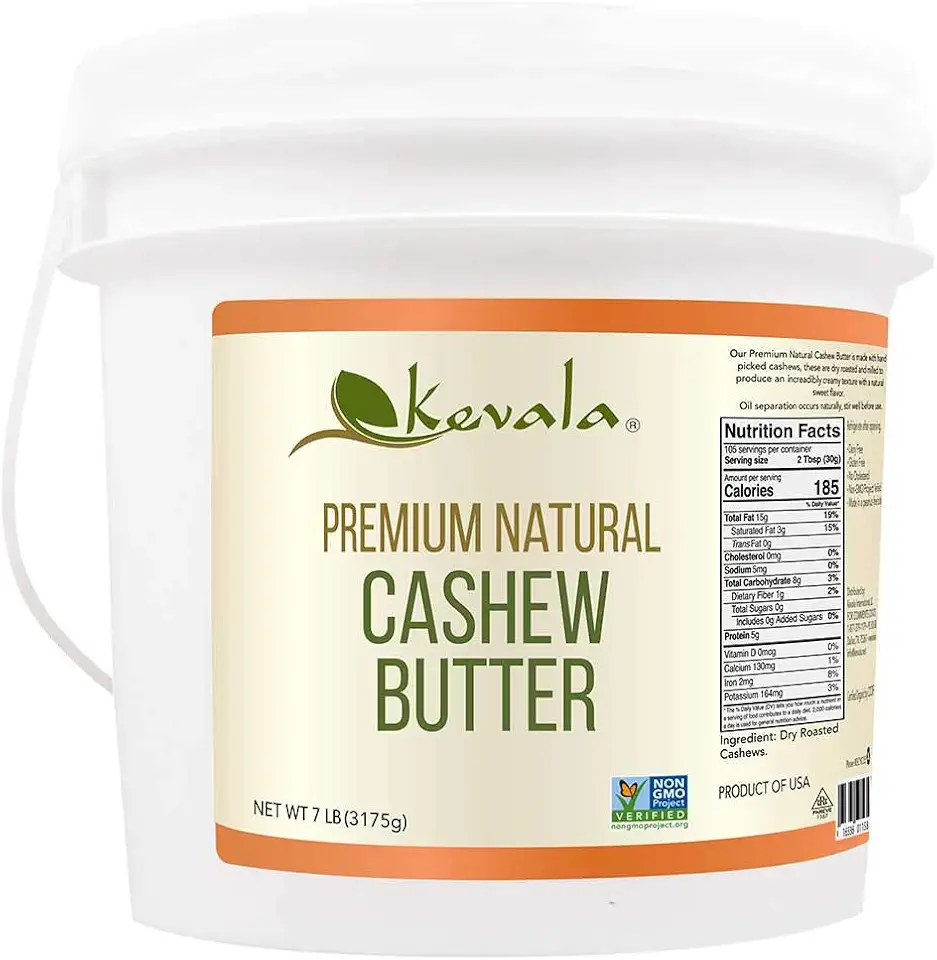 Kevala Cashew Butter 7 Lbs Pail
$83.62
View details
Prime
best seller
Kevala Cashew Butter 7 Lbs Pail
$83.62
View details
Prime
best seller
 4th & Heart Original Grass-Fed Ghee, Clarified Butter, Keto, Pasture Raised, Lactose and Casein Free, Certified Paleo (9 Ounces)
$11.49
View details
Prime
4th & Heart Original Grass-Fed Ghee, Clarified Butter, Keto, Pasture Raised, Lactose and Casein Free, Certified Paleo (9 Ounces)
$11.49
View details
Prime
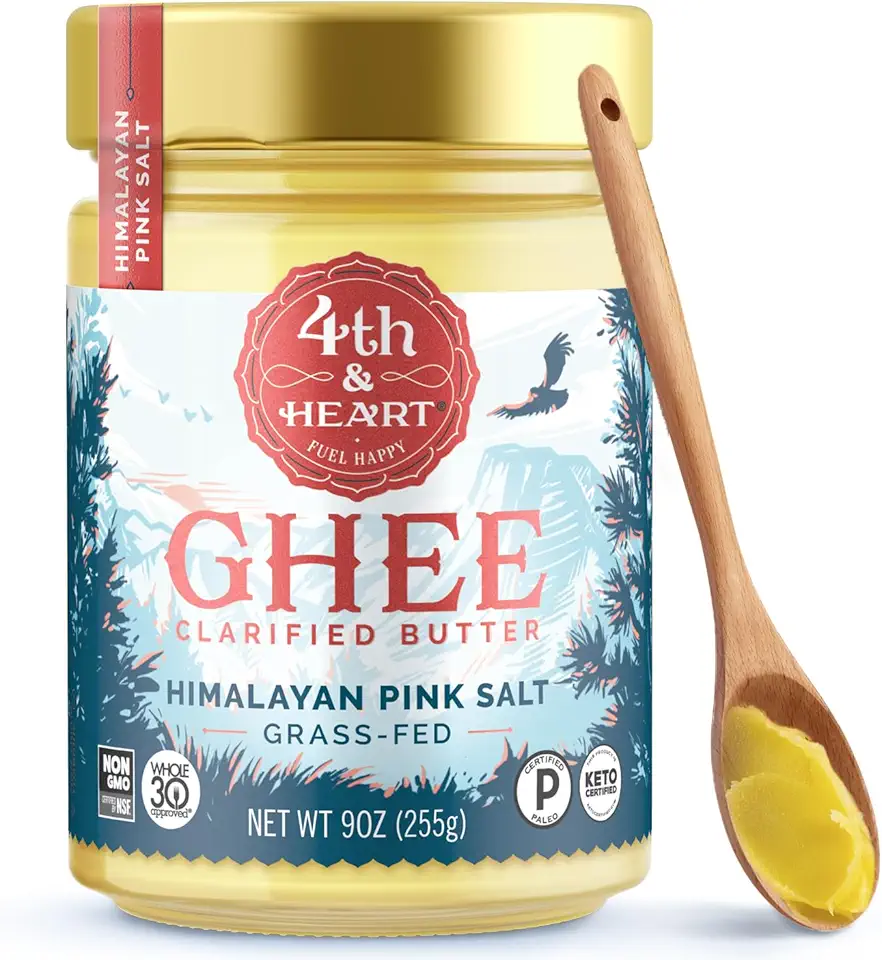 4th & Heart Himalayan Pink Salt Grass-Fed Ghee, Clarified Butter, Keto Pasture Raised, Non-GMO, Lactose and Casein Free, Certified Paleo (9 Ounces)
$9.49
View details
4th & Heart Himalayan Pink Salt Grass-Fed Ghee, Clarified Butter, Keto Pasture Raised, Non-GMO, Lactose and Casein Free, Certified Paleo (9 Ounces)
$9.49
View details
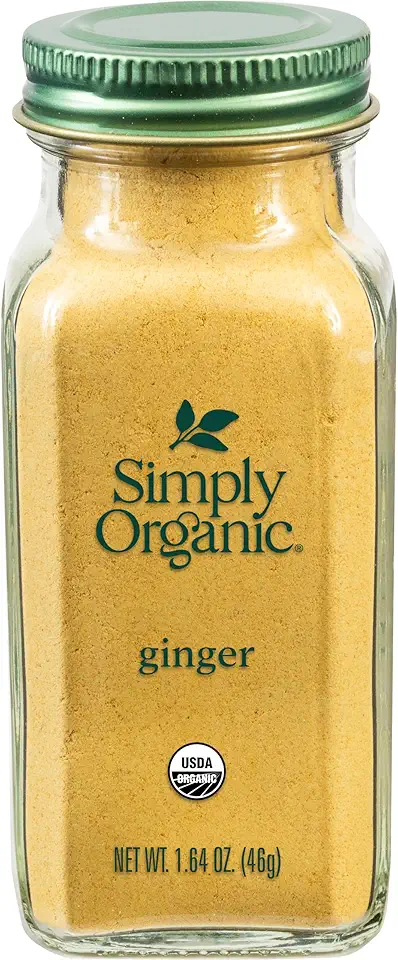 Simply Organic Ground Ginger Root, 1.64 Ounce, Non ETO, Non Irradiated, Non GMO, Complements Both Sweet & Savory Dishes
$7.93
View details
Prime
Simply Organic Ground Ginger Root, 1.64 Ounce, Non ETO, Non Irradiated, Non GMO, Complements Both Sweet & Savory Dishes
$7.93
View details
Prime
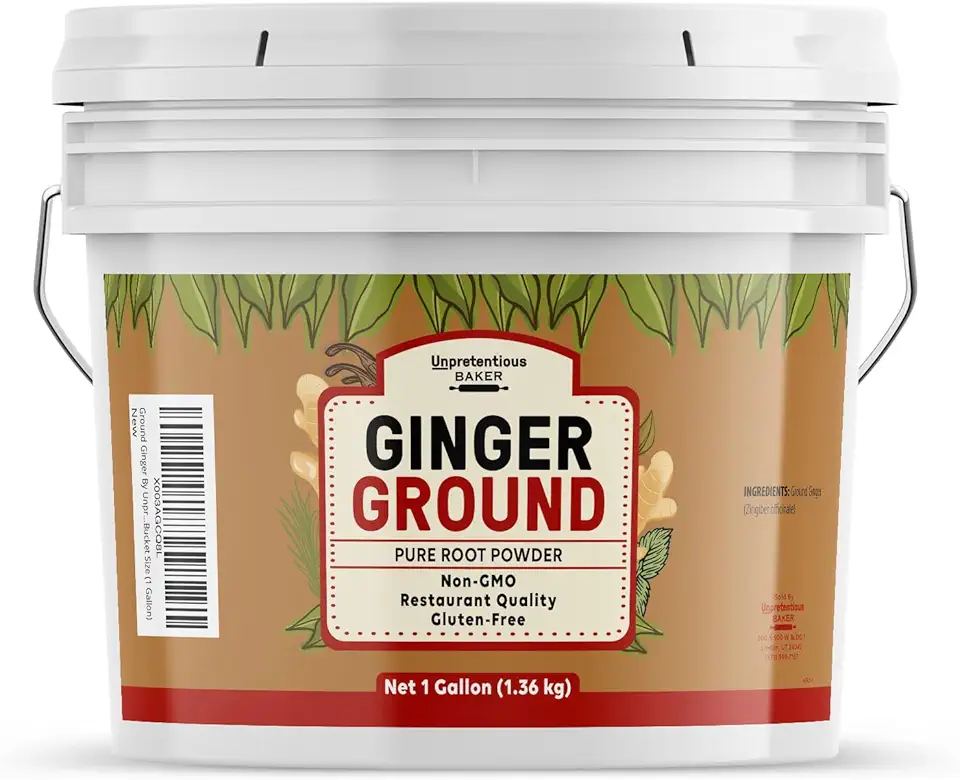 Unpretentious Ground Ginger, 1 Gallon Bucket, Indian & Asian Cuisine, Bulk Bucket Size
$28.99
View details
Prime
Unpretentious Ground Ginger, 1 Gallon Bucket, Indian & Asian Cuisine, Bulk Bucket Size
$28.99
View details
Prime
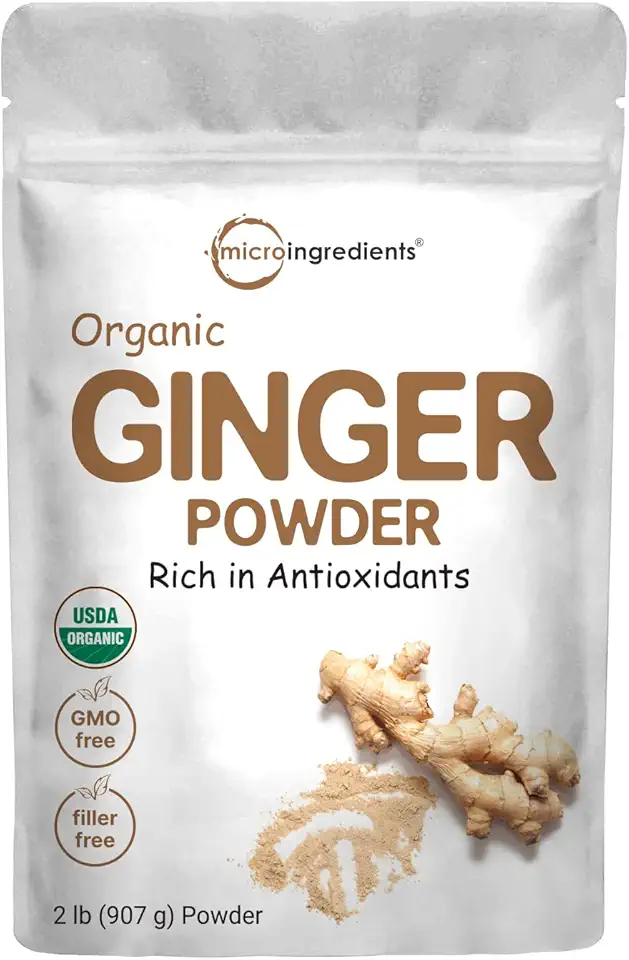 Organic Ginger powder, 2lbs (32oz) | Premium Source for Spice & Seasoning | Great for Baking, Cooking & Tea | Additive Free, Non-GMO, Bulk Supply
$22.99
View details
Organic Ginger powder, 2lbs (32oz) | Premium Source for Spice & Seasoning | Great for Baking, Cooking & Tea | Additive Free, Non-GMO, Bulk Supply
$22.99
View details
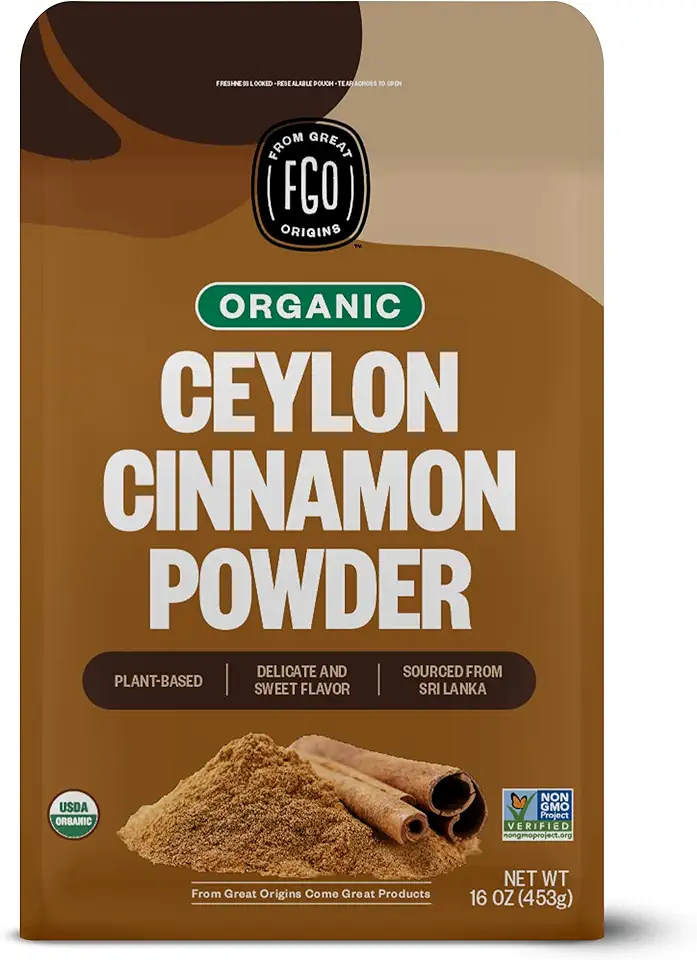 FGO Organic Ceylon Cinnamon Powder, 100% Raw from Sri Lanka, 16oz, Packaging May Vary (Pack of 1)
$19.99
View details
Prime
FGO Organic Ceylon Cinnamon Powder, 100% Raw from Sri Lanka, 16oz, Packaging May Vary (Pack of 1)
$19.99
View details
Prime
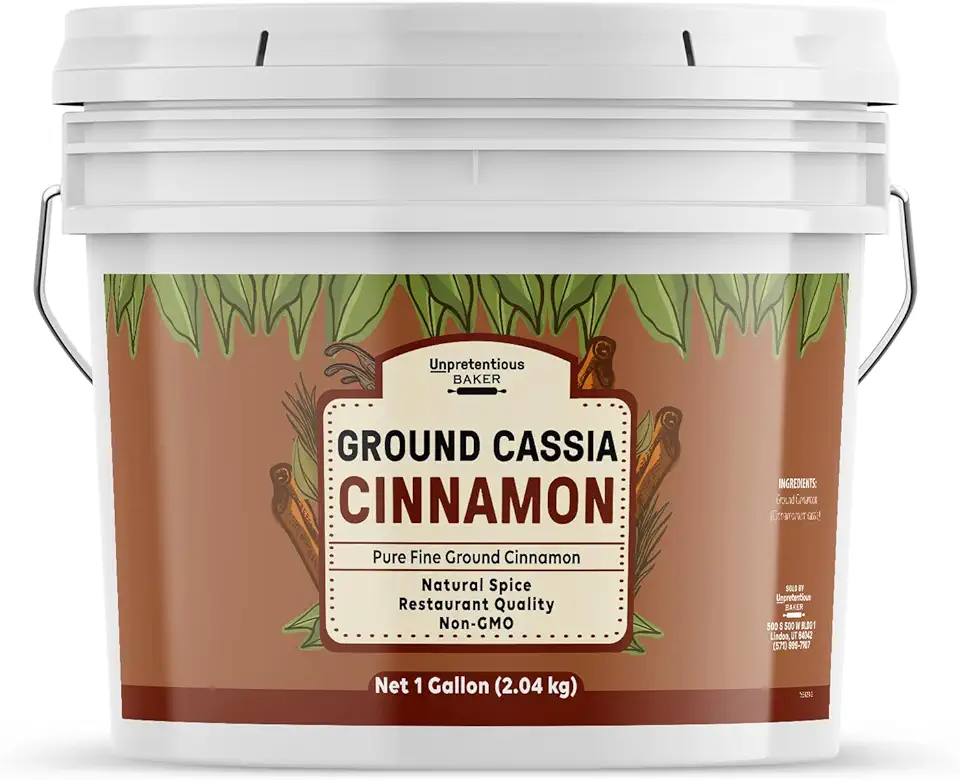 Unpretentious Ground Cassia Cinnamon, 1 Gallon, Baking & Cooking
$45.99
View details
Prime
Unpretentious Ground Cassia Cinnamon, 1 Gallon, Baking & Cooking
$45.99
View details
Prime
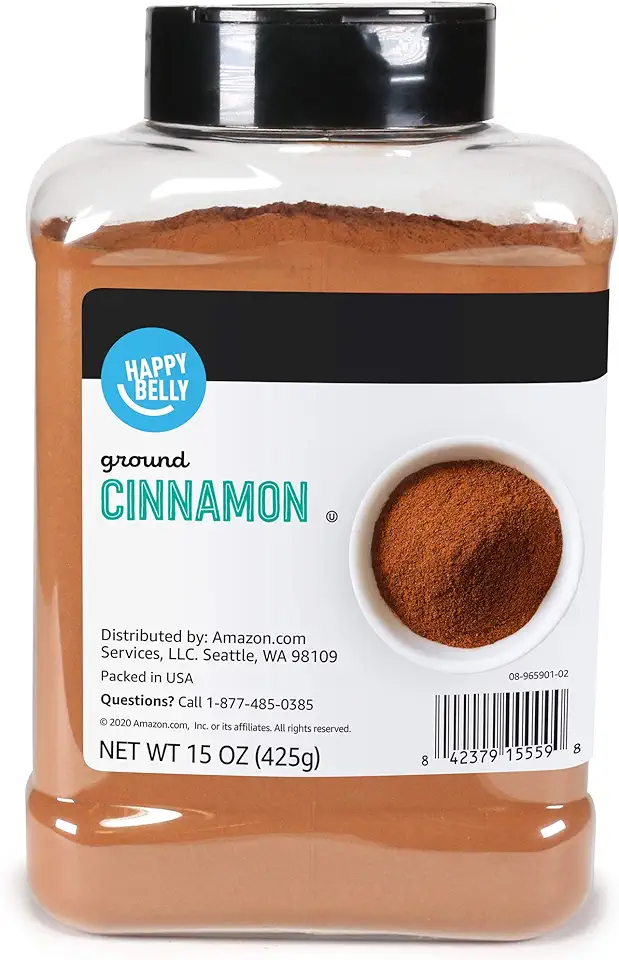 Amazon Brand - Happy Belly Cinnamon, Ground, 15 ounce (Pack of 1)
$9.02
$10.31
View details
Amazon Brand - Happy Belly Cinnamon, Ground, 15 ounce (Pack of 1)
$9.02
$10.31
View details
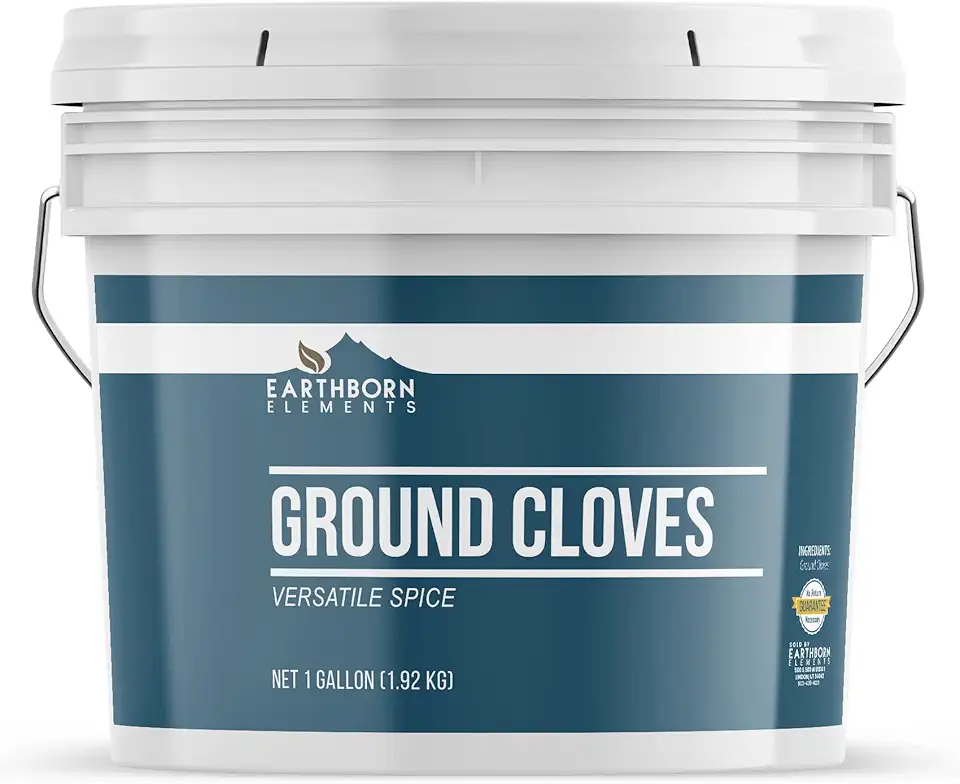 Earthborn Elements Ground Cloves 1 Gallon Bucket, Backed Goods, Versatile Spice
$58.99
View details
Prime
Earthborn Elements Ground Cloves 1 Gallon Bucket, Backed Goods, Versatile Spice
$58.99
View details
Prime
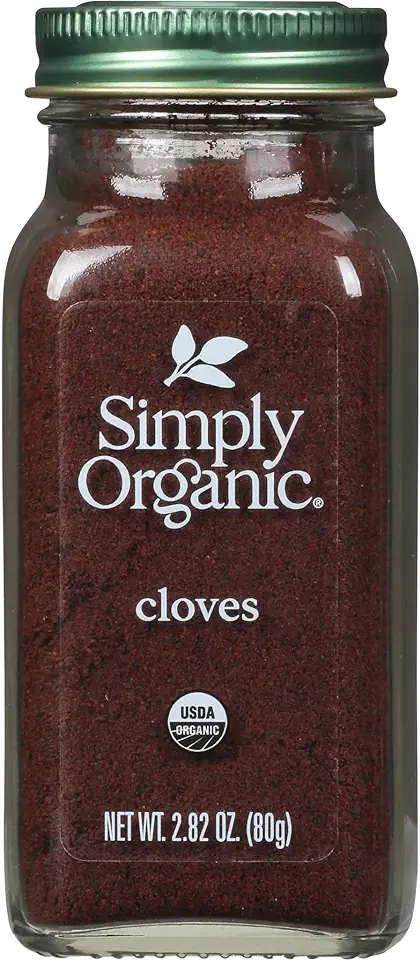 Simply Organic Ground Cloves 2.82 Ounce Jar, Pure Organic Ground Cloves, Kosher, Pungent Warm Aroma, Bittersweet & Spicy
$11.98
View details
Prime
Simply Organic Ground Cloves 2.82 Ounce Jar, Pure Organic Ground Cloves, Kosher, Pungent Warm Aroma, Bittersweet & Spicy
$11.98
View details
Prime
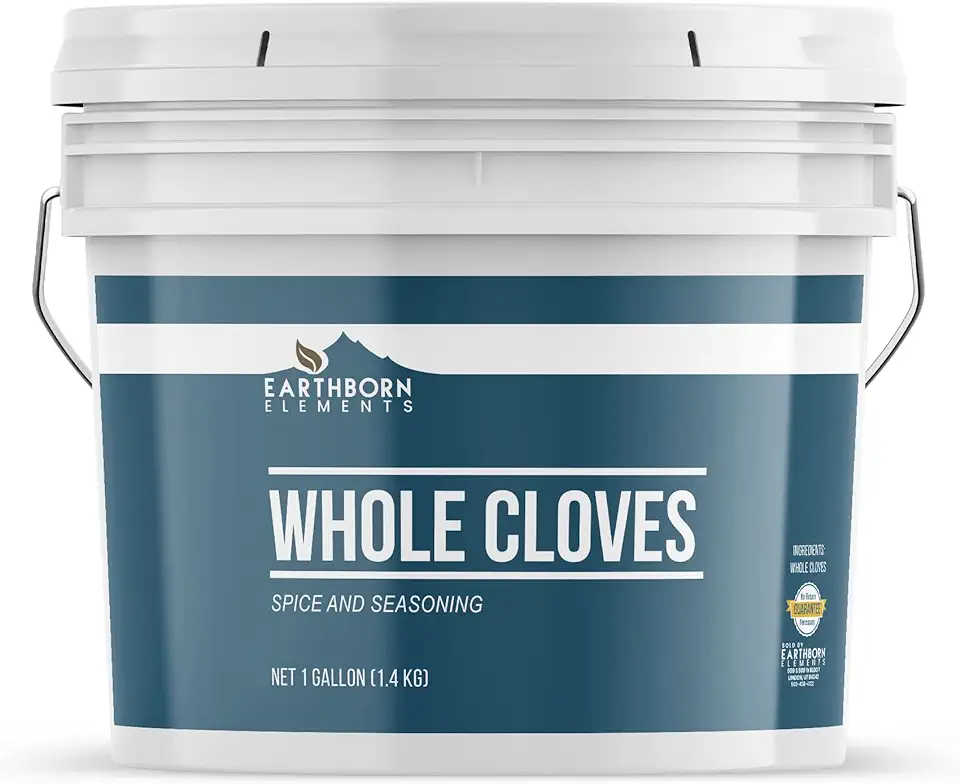 Earthborn Elements Whole Cloves, 1 Gallon Bucket, Warm Flavor, Aromatic Spice
$54.99
View details
Earthborn Elements Whole Cloves, 1 Gallon Bucket, Warm Flavor, Aromatic Spice
$54.99
View details
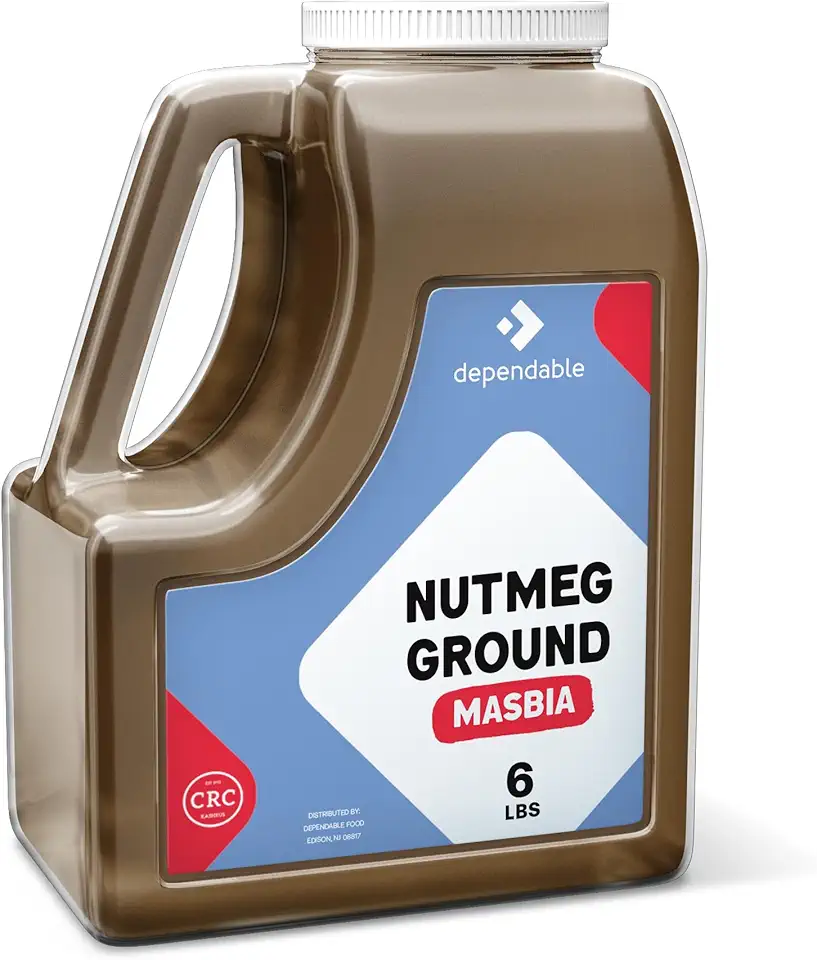 Dependable Foods Ground Nutmeg – 6 Lb. Bulk Jar - Non-GMO, Kosher, Salt-Free, Allergen-Free Seasoning | Exquisite Spice Fusion
$96.99
View details
Prime
Dependable Foods Ground Nutmeg – 6 Lb. Bulk Jar - Non-GMO, Kosher, Salt-Free, Allergen-Free Seasoning | Exquisite Spice Fusion
$96.99
View details
Prime
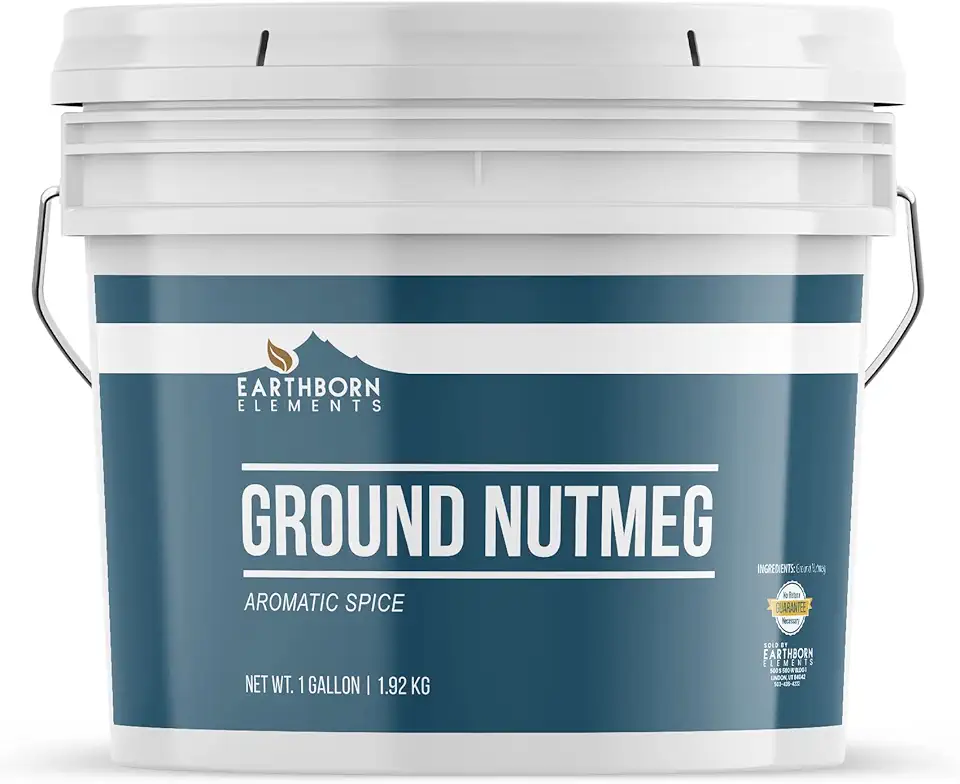 Earthborn Elements Ground Nutmeg 1 Gallon Bucket, Aromatic Spice, Bulk Size
$59.99
View details
Prime
Earthborn Elements Ground Nutmeg 1 Gallon Bucket, Aromatic Spice, Bulk Size
$59.99
View details
Prime
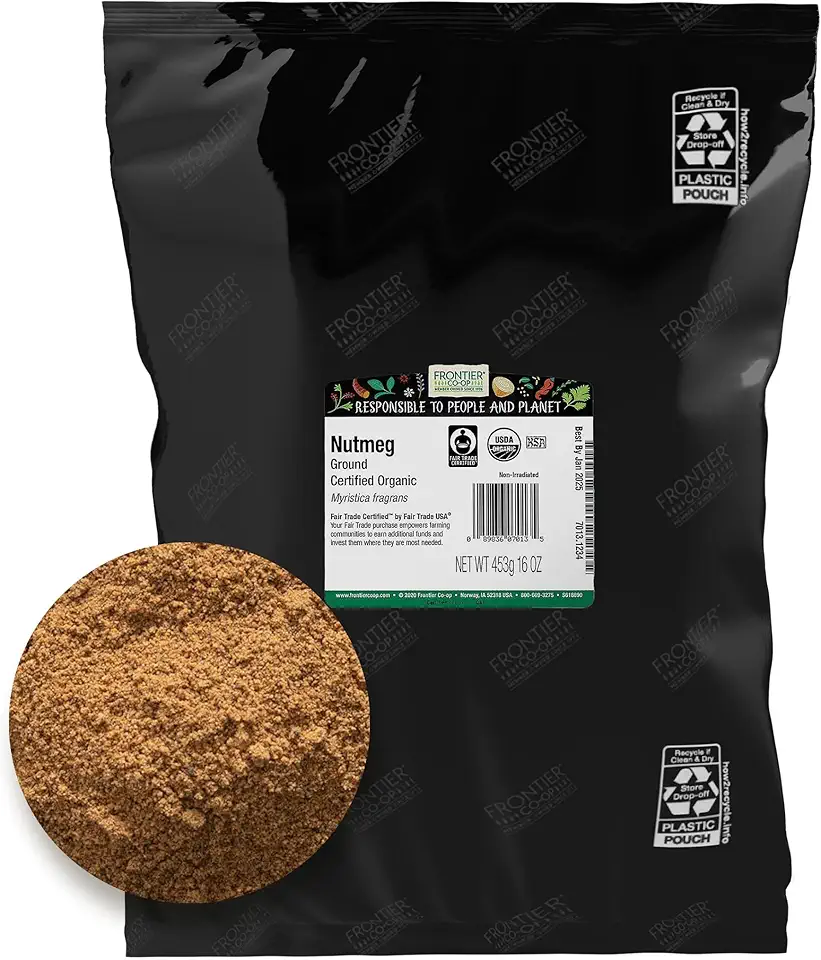 Frontier Co-op Nutmeg Ground, 1lb Certified Organic Nutmeg Powder - Fair Trade, Kosher | 1 Pound Bulk Bag | Wholesale Cafe, Restaurant Supply | Myristica fragrans
$39.24
View details
Frontier Co-op Nutmeg Ground, 1lb Certified Organic Nutmeg Powder - Fair Trade, Kosher | 1 Pound Bulk Bag | Wholesale Cafe, Restaurant Supply | Myristica fragrans
$39.24
View details
For Glazing
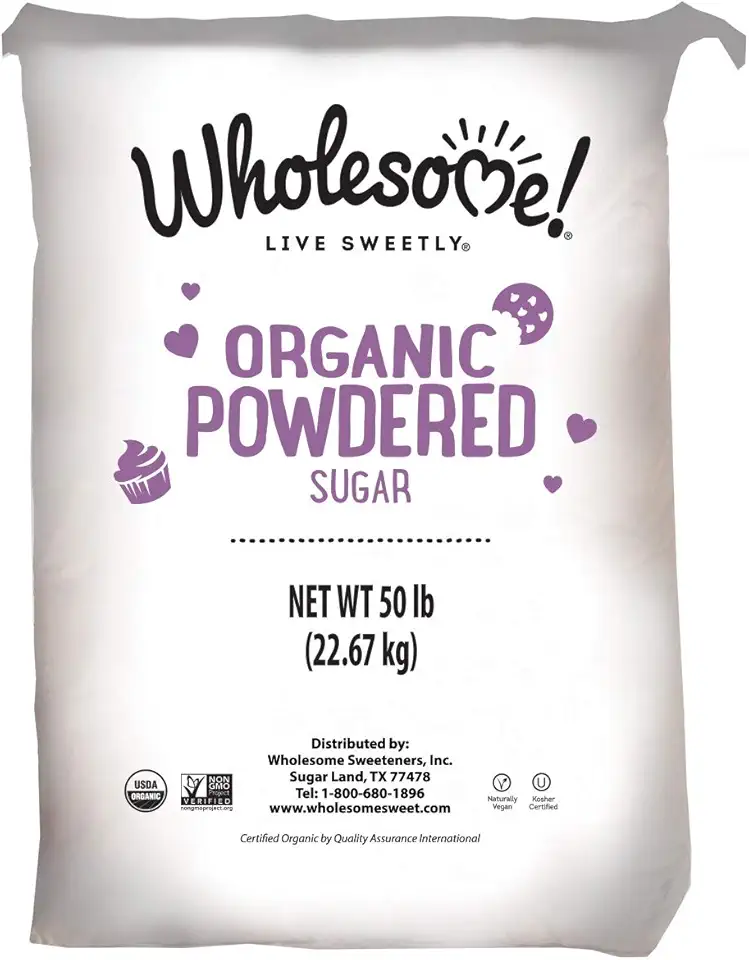 Wholesome Fair Trade Organic Powdered Sugar, Naturally Flavored Real Sugar, Non GMO & Gluten Free, 50 Pound (Pack of 1)
$106.95
View details
Prime
best seller
Wholesome Fair Trade Organic Powdered Sugar, Naturally Flavored Real Sugar, Non GMO & Gluten Free, 50 Pound (Pack of 1)
$106.95
View details
Prime
best seller
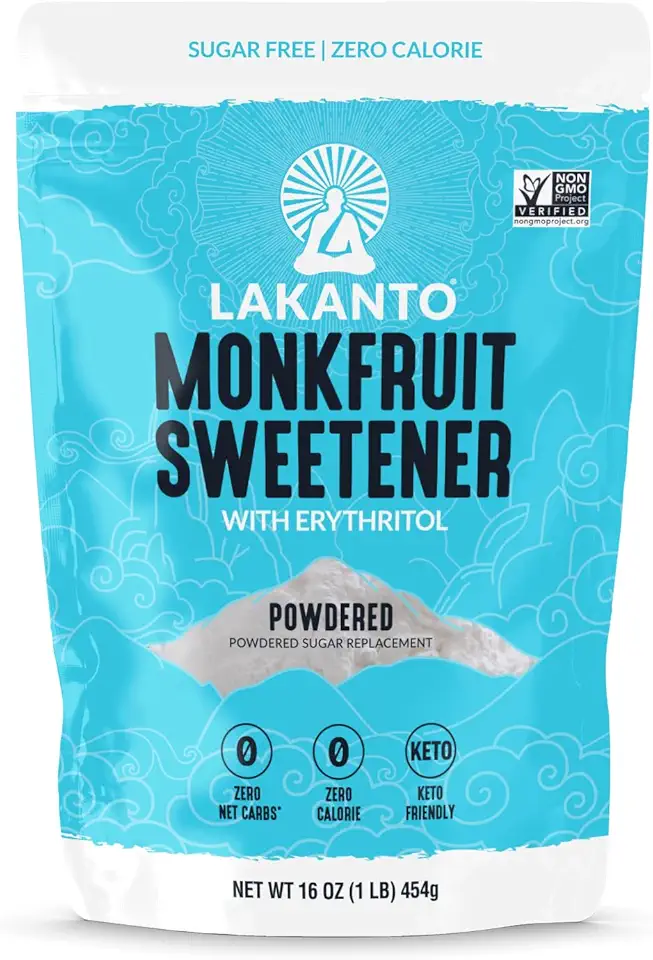 Lakanto Powdered Monk Fruit Sweetener with Erythritol - Powdered Sugar Substitute, Zero Calorie, Keto Diet Friendly, Zero Net Carbs, Baking, Extract, Sugar Replacement (Powdered - 1 lb)
$11.90
View details
Prime
Lakanto Powdered Monk Fruit Sweetener with Erythritol - Powdered Sugar Substitute, Zero Calorie, Keto Diet Friendly, Zero Net Carbs, Baking, Extract, Sugar Replacement (Powdered - 1 lb)
$11.90
View details
Prime
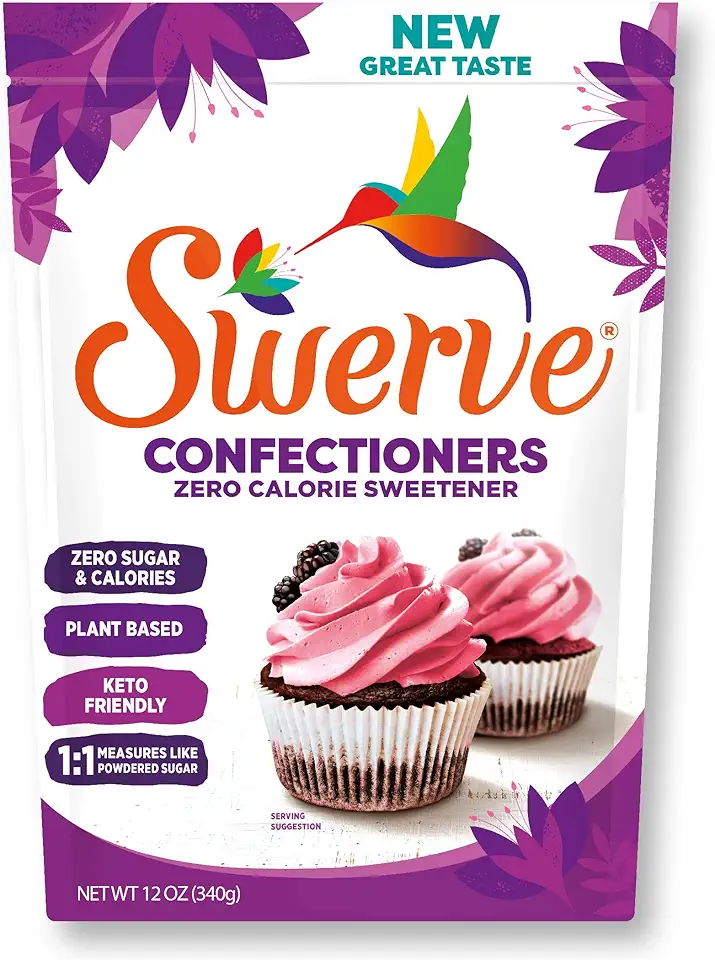 Swerve Sweetener Powder, Confectioners, 12 oz
$6.98
View details
Swerve Sweetener Powder, Confectioners, 12 oz
$6.98
View details
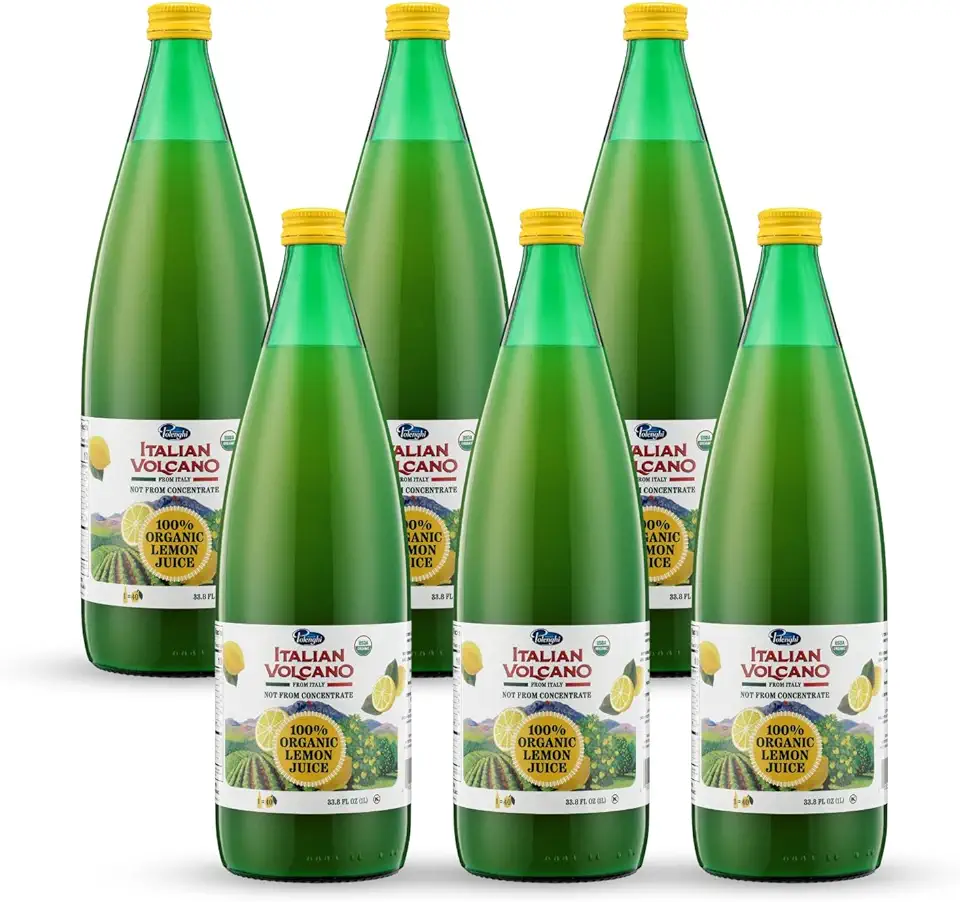 Volcano Bursts Organic Italian Lemon Juice, 33.8 oz (6 Pack)
$66.99
View details
Prime
Volcano Bursts Organic Italian Lemon Juice, 33.8 oz (6 Pack)
$66.99
View details
Prime
 Realemon 100% Lemon Juice, 2.5 oz
$4.01
View details
Prime
best seller
Realemon 100% Lemon Juice, 2.5 oz
$4.01
View details
Prime
best seller
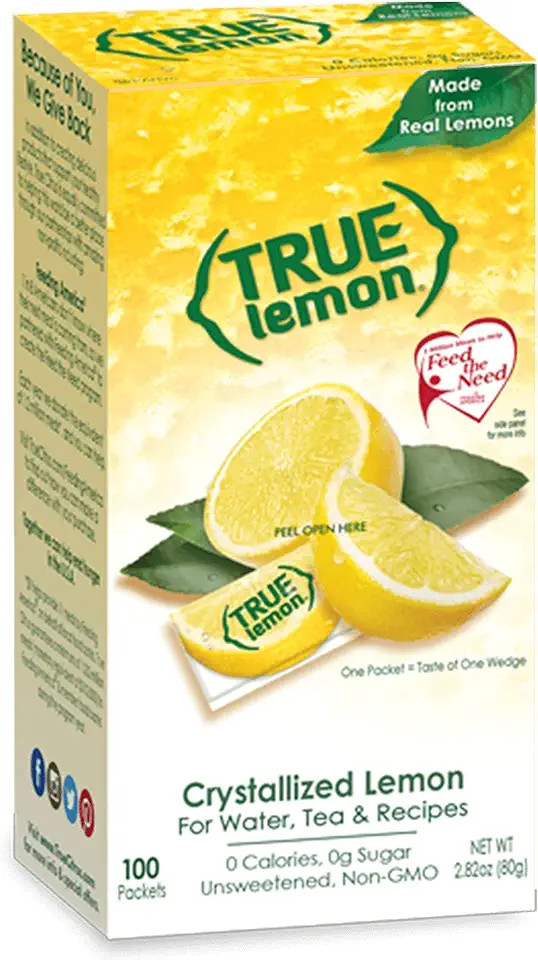 TRUE LEMON Water Enhancer, Bulk Dispenser, 100 Count (Pack of 1), 0 Calorie Drink Mix Packets For Water, Sugar Free Lemon Flavoring Powder Packets
$6.93
View details
TRUE LEMON Water Enhancer, Bulk Dispenser, 100 Count (Pack of 1), 0 Calorie Drink Mix Packets For Water, Sugar Free Lemon Flavoring Powder Packets
$6.93
View details
Instructions
Step 1
Preheat your oven to a temperature of 250 degrees Celsius (480 degrees Fahrenheit). This high initial temperature helps to quickly activate the rising agents in the dough.
*Make sure* the oven rack is positioned in the middle for even baking.
Step 2
In a large mixing bowl, combine the flour, baking soda, ginger, cinnamon, cloves, nutmeg, and salt. Mix until these dry ingredients are evenly distributed.
In a saucepan, melt the butter on low heat, then add the sugar and honey, stirring until completely dissolved.
Once slightly cooled, add the melted mixture to the bowl of dry ingredients along with the egg. Stir everything to form a smooth dough.
*It’s important* to let the dough rest in the refrigerator for at least an hour for optimal results.
Step 3
Roll the rested dough on a lightly floured surface until it's about 0.5 cm (1/4 inch) thick.
Use cookie cutters to cut out shapes and place them on a baking sheet lined with parchment paper.
*Be careful* to leave some space between the cookies as they will expand slightly while baking.
Step 4
Place the gingerbread in the preheated oven and bake for 3 minutes.
Then, open the oven door for 30 seconds to release some heat. Reduce the temperature to 170 degrees Celsius (340 degrees Fahrenheit) and continue to bake for another 15 minutes until golden brown.
*Your kitchen* should be filled with a warm, spicy aroma.
Step 5
While the gingerbread is cooling, prepare the glaze by beating the egg white until foamy.
Gradually add the powdered sugar and lemon juice, mixing until it forms a smooth, glossy icing.
*The glaze* should be thick enough to coat the back of a spoon.
Step 6
Once the gingerbread has cooled completely, use a piping bag or a small spoon to apply the glaze creatively on each piece.
*Allow* the glaze to set completely before storing or enjoying your delightful gingerbread creations.
Servings
Equipment
Ensure your oven is well-calibrated to consistently achieve perfect bakes. Preheat it to exactly 250 degrees Celsius to kick off the process.
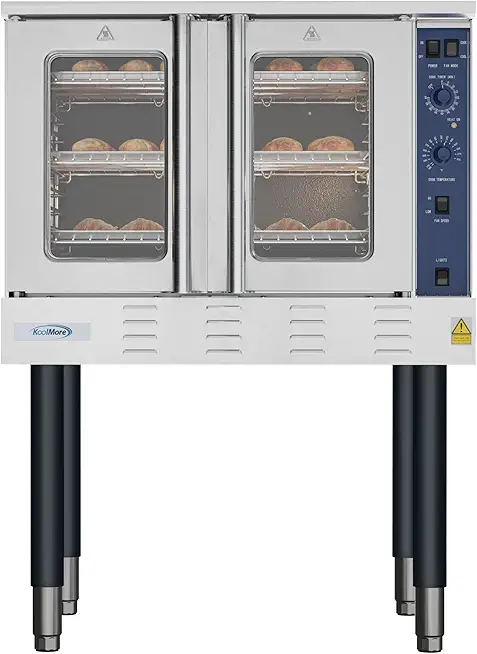 KoolMore 38 in. Full-Size Single Deck Commercial Natural Gas Convection Oven 54,000 BTU in Stainless-Steel (KM-CCO54-NG)
$3651.89
View details
Prime
KoolMore 38 in. Full-Size Single Deck Commercial Natural Gas Convection Oven 54,000 BTU in Stainless-Steel (KM-CCO54-NG)
$3651.89
View details
Prime
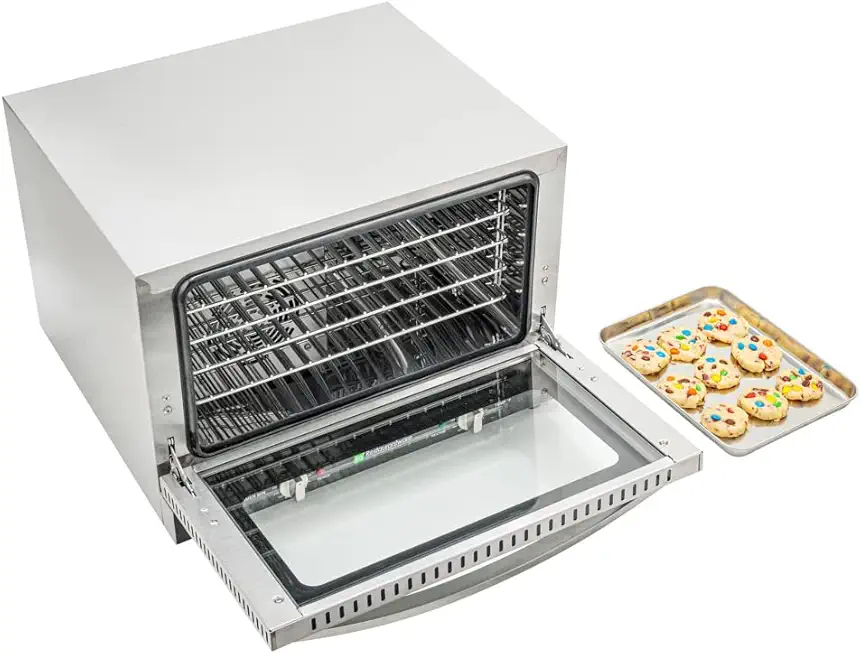 Restaurantware Hi Tek Half Size Convection Oven 1 Countertop Electric Oven - 1.5 Cu. Ft. 120V Stainless Steel Commercial Convection Oven 1600W 4 Racks Included
$1077.29
View details
Prime
Restaurantware Hi Tek Half Size Convection Oven 1 Countertop Electric Oven - 1.5 Cu. Ft. 120V Stainless Steel Commercial Convection Oven 1600W 4 Racks Included
$1077.29
View details
Prime
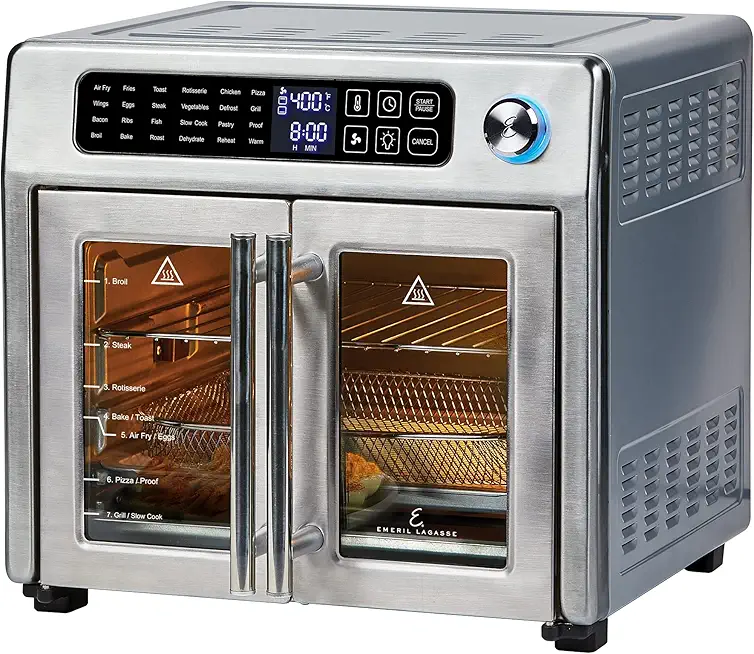 Emeril Lagasse 26 QT Extra Large Air Fryer, Convection Toaster Oven with French Doors, Stainless Steel
$189.99
View details
Emeril Lagasse 26 QT Extra Large Air Fryer, Convection Toaster Oven with French Doors, Stainless Steel
$189.99
View details
Opt for a heavy, non-stick baking tray to ensure your cookies bake evenly without sticking.
A cooling rack helps the gingerbread cookies cool quickly, preventing any sogginess.
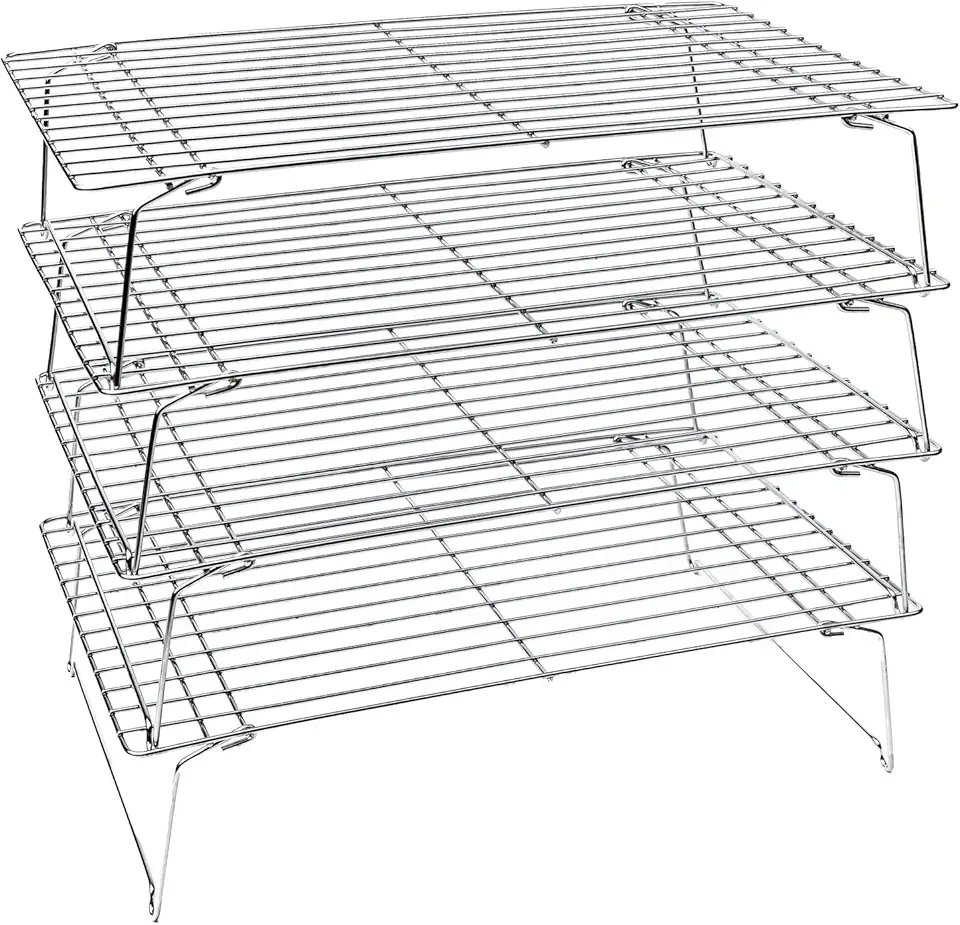 KITCHENATICS 4-Tier Stackable Cooling Racks for Baking, 100% Stainless Steel Wire Rack, Oven Safe Baking Rack, Oven Rack for Pizza, Cake, Bread, Cooling Rack for Cooking and Baking, Cookie Rack 15x10
$31.98
$45.98
View details
Prime
KITCHENATICS 4-Tier Stackable Cooling Racks for Baking, 100% Stainless Steel Wire Rack, Oven Safe Baking Rack, Oven Rack for Pizza, Cake, Bread, Cooling Rack for Cooking and Baking, Cookie Rack 15x10
$31.98
$45.98
View details
Prime
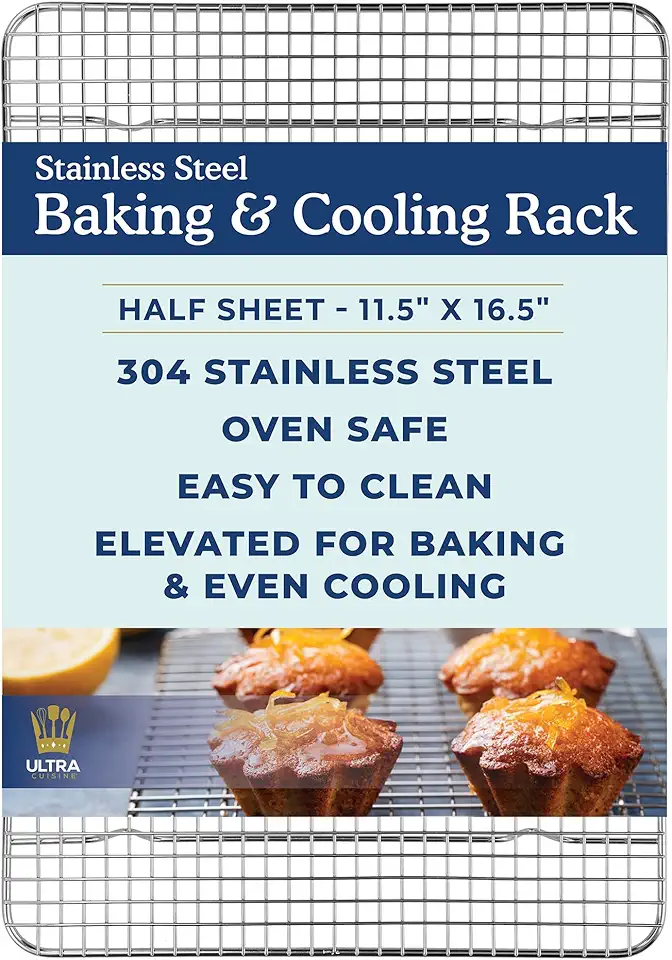 Ultra Cuisine Heavy Duty Cooling Rack for Cooking and Baking - 100% Stainless Steel Baking Rack & Wire Cooling Rack - Cookie Cooling Racks for Baking - Food Safe - Fits Half Sheet Pans - 11.5" x 16.5"
$21.99
$34.99
View details
Prime
Ultra Cuisine Heavy Duty Cooling Rack for Cooking and Baking - 100% Stainless Steel Baking Rack & Wire Cooling Rack - Cookie Cooling Racks for Baking - Food Safe - Fits Half Sheet Pans - 11.5" x 16.5"
$21.99
$34.99
View details
Prime
 Spring Chef Cooling Rack & Baking Rack - 100% Stainless Steel Cookie Cooling Racks, Wire Rack for Baking, Oven Safe 10 x 15 Inches Fits Jelly Roll Pan - Cooling Racks for Cooking and Baking, Set of 2
$24.99
View details
Spring Chef Cooling Rack & Baking Rack - 100% Stainless Steel Cookie Cooling Racks, Wire Rack for Baking, Oven Safe 10 x 15 Inches Fits Jelly Roll Pan - Cooling Racks for Cooking and Baking, Set of 2
$24.99
View details
Timing is crucial for these cookies. Use a reliable kitchen timer to avoid over-baking.
Variations
Want to give your gingerbread a modern twist? 🌿 Explore these variations!
Gluten-Free Option: Simply swap regular flour for a high-quality gluten-free blend to enjoy these cookies without wheat worries. They stay **just as moist and flavorful** – no compromise! 💚
Vegan Delight: Go plant-based by choosing margarine in place of butter and using flaxseed meal soaked in water as an egg substitute. The flavors remain rich, and the cookies retain their **signature chewy texture**. 🌱
Faq
- How do I know when my gingerbread cookies are done?
They should have a golden rim and a *slightly firm* top upon touching. Check them after 15 minutes at 170 degrees Celsius to ensure they’re not overdone.
- What's the best way to store leftover cookies?
Keep them in an airtight container at room temperature for up to a week. You can also freeze them for up to three months—just make sure to thaw them before serving.
- How can I achieve a more pronounced spice flavor?
Try adding extra cinnamon, ginger, or even a pinch of allspice to the mix. Every spice adds its unique zing to the cookie!
- Can I substitute honey for the traditional molasses?
Absolutely! Honey will give you a slightly sweeter profile and a softer texture, but it will still be delicious.
- What's the ideal thickness for rolling the dough?
Aim for about half a centimeter to one centimeter thick for perfectly chewy cookies that bake evenly.
- How can I make my cookies look uniform and professional?
Use cookie cutters for consistent shapes and apply even pressure when rolling the dough to maintain uniform thickness. *Practice makes perfect, so don't be afraid to try again!* 🍪


